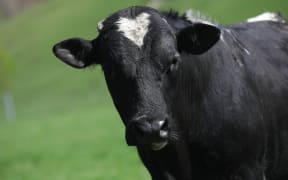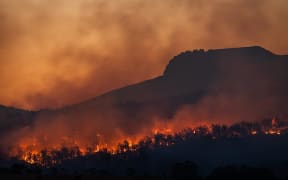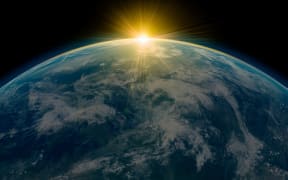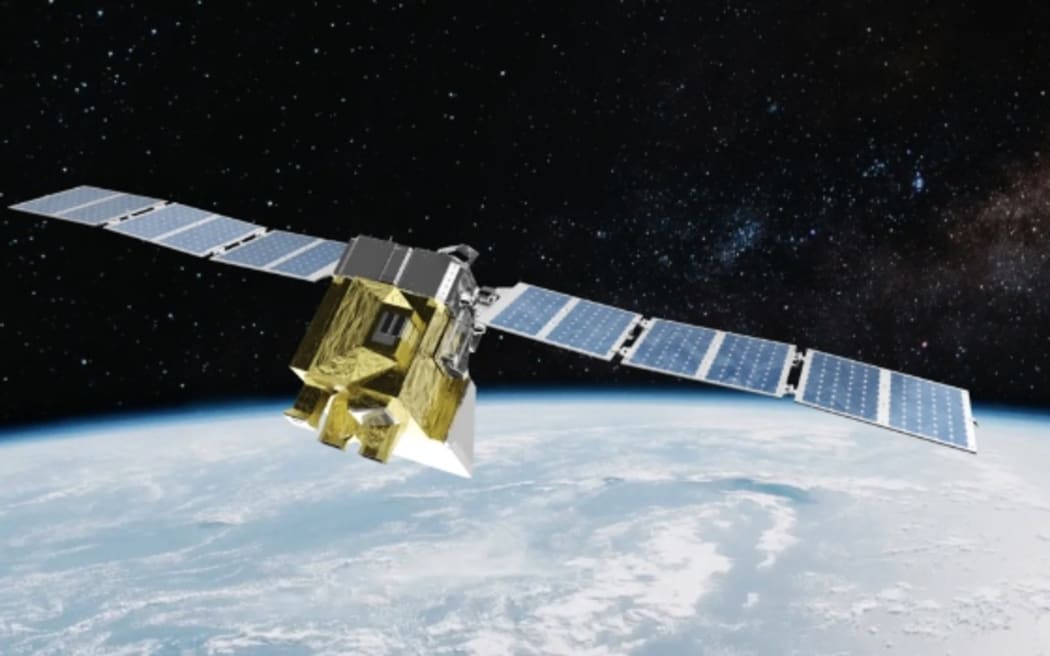
Artist’s rendering of MethaneSAT, the satellite EDF developed. Photo: Supplied / Environmental Defence Fund
"Do I have a deal for you."
Those words, or something like them, are how Rocket Lab founder Peter Beck first introduced the idea of New Zealand putting millions of dollars towards a US-based satellite mission, according to emails released to RNZ under the Official Information Act.
It was 2018 when US non-profit Environmental Defence Fund (EDF) approached the New Zealand government to invest in its MethaneSAT project, which aims to detect and shut down rogue methane emissions spewing from oil and gas activities. If successful, it could make a rapid dent in global heating.
EDF was looking for funding and practical involvement from an international partner.
New Zealand was looking for a space mission to take part in.
Beck was hoping Rocket Lab would win the contract to launch the satellite from Māhia, on the remote East Coast of the North Island.
Two of those things happened, one didn't.
Rocket Lab didn't win the contract - the satellite grew too big for it to launch, and ended up going to US-based SpaceX.
But New Zealand pitched in $29.3 million, and as a result won the right to host the mission control. Rocket Lab got the contract to establish that, and will later hand control of it to the University of Auckland.
While this was unfolding, claims about what the satellite could do for methane from farming within New Zealand evolved considerably. Its true powers won't be known until after it launches, next year.
In the meantime, here's how New Zealand came to fund a mission whose purpose is mainly tracking emissions from drilling oil and gas - a different sort of methane from what we emit.
Anatomy of a space pitch
According to documents, one of the first approaches came via the head of Hawke's Bay Regional Council (whose councillor, Tom Belford, used to work for EDF). He told the New Zealand space agency (which sits inside the Ministry for Business Innovation and Employment) that EDF was considering Rocket Lab as a launch partner.
But, he wrote, whether this happened or not would partly depend on "what other inducements and programme involvement might be part of the relationship."
Staff at the space agency saw potential to position New Zealand as a serious player in space science.
They told RNZ last week their interest was never contingent on Rocket Lab launching the satellite, they were more interested in boosting the wider space industry.
But aside from space skills, they had climate change in mind.

Methane-laced livestock burps make up an unusually large proportion of the country's climate footprint. Photo: RNZ / Cosmo Kentish-Barnes
Documents show they thought the mission might appeal to the government as a way to show international leadership on climate change, and specifically methane.
Methane-laced livestock burps make up an unusually large proportion of the country's climate footprint.
At first, the agency believed the satellite would be a tool to give New Zealand more accurate measurements of the methane coming from its fields of burping, roaming sheep and cattle, and figure out if efforts by farmers to tackle the gas from their livestock were working.
Here's how agency staff explained what they believed MethaneSAT would do, to their counterparts at the Ministry for the Environment in 2018.
"The satellite will be able to detect emissions from agriculture" and "importantly ... should be able to provide data that would enable more precise measurement of methane emissions in New Zealand and help inform policy related to agricultural emissions," they wrote.
Incidentally, this was a big ask for a sensor in orbit around planet Earth, operating at MethaneSAT's level of resolution.
While leaks from the oil and gas industry make big, clear plumes of methane, accurately measuring the collected burps of spread-out herds of individual cattle is another matter.
After doing more scoping, space officials quickly realised the mission would not do this.
But New Zealand's involvement still leans heavily on its big share of livestock methane.
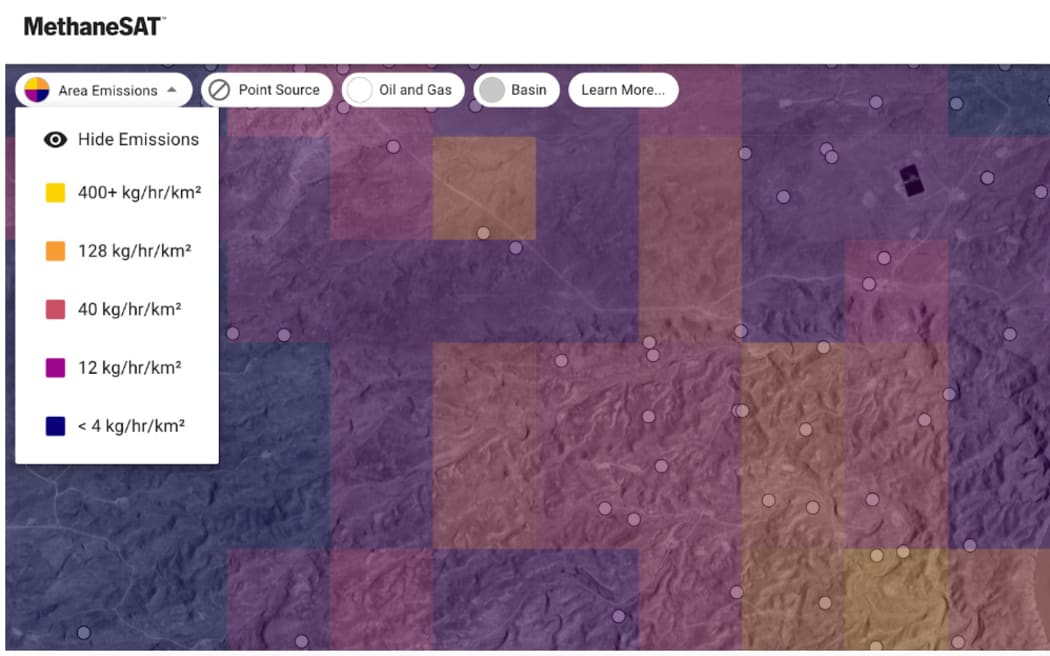
A snapshot of methane data collected from the Uinta Basin on a beta version of the data platform shows how an area’s methane emissions correlate with oil and gas infrastructure. Photo: Supplied / Environmental Defence Fund
'Hopelessly oversold'
When the space agency asked New Zealand scientists for feedback, specialists at NIWA, Manaaki Whenua/Landcare Research and the NZ Agricultural Greenhouse Gas Research Alliance each replied with variations of the same message, which was that detecting farming methane at all would be at the limits of the satellite's capabilities, and MethaneSAT would not be able to track year-on-year changes at the level required to meet New Zealand's climate target (cutting methane emissions 10 percent by 2030).
These scientists told the space agency the mission was "hopelessly oversold" for agriculture and would not add much to New Zealand's understanding of its greenhouse gas profile from farming, let alone help the government make policy decisions on climate change.
However, they also said satellites might one day get to the point of being that accurate for agriculture, and it could be good for the country to get "in the tent" with that kind of research.
The agency's focus turned to leading some of that early-stage farming-related research.
Again, the agency told RNZ last week, improving New Zealand's own estimates of livestock gas was never part of the investment case for this mission. Ministerial briefings back that up: Briefings to ministers Megan Woods and David Parker say MethaneSAT would have "some capability" to detect agricultural methane, but its main focus was oil and gas.
The main goals advertised to ministers were building New Zealand's space industry and showing leadership on climate change, although New Zealand's cow- and sheep- belch issue was mentioned often in rationales.
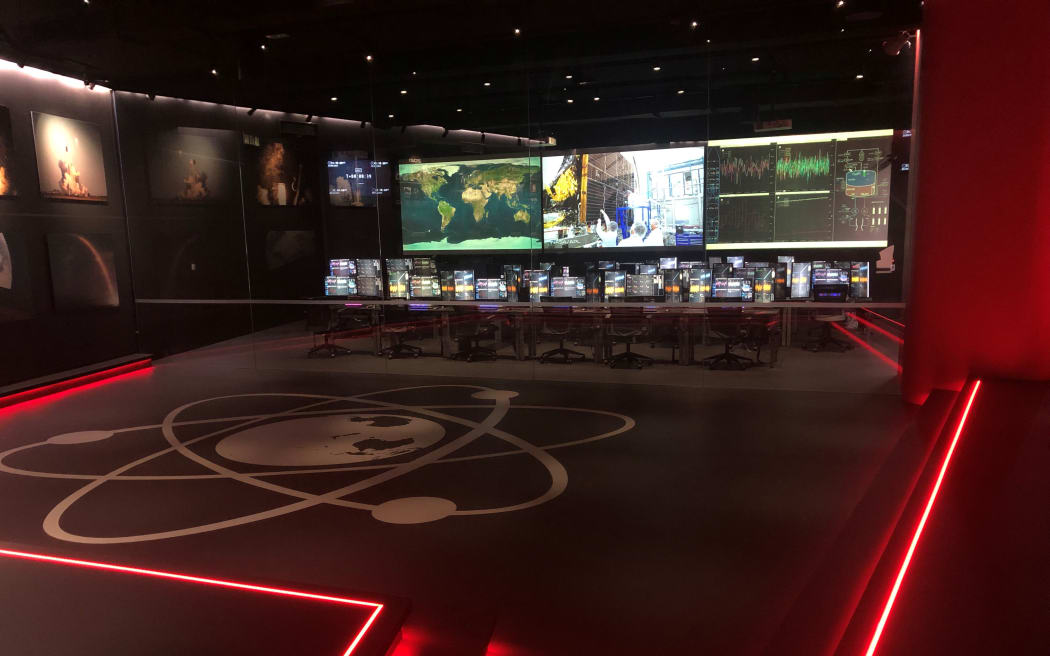
The Rocket Lab control room in Mt Wellington, Auckland. Photo: Sharon Brettkelly
New Zealand's eventual $29.35m commitment is mainly for the mission control, which will remain at the University of Auckland after MethaneSAT's work is completed, but includes $6m for research aimed at teaching the satellite (and researchers) how to measure farming methane from space.
But some of the early promises stuck around in public statements.
In 2020, NIWA's Sara Mikaloff-Fletcher - an expert at studying methane and carbon dioxide flows in the atmosphere - was named as the lead scientist on the programme to train the satellite to measure farm gas.
After being announced, she said "this project will give Aotearoa a clearer picture of our agricultural emissions, help us track the effectiveness of our emissions reduction strategies, and establish us as world leaders in methane research."
What will it do?
RNZ spoke to the space agency and Dr Mikaloff Fletcher about how the farming side of the mission was going, and what they expected the satellite to do when it launched.
The space agency said EDF was always upfront about the fact that - unlike oil and gas - the research supporting MethaneSAT's capabilities for measuring farming methane had not been completed. The non-profit was always keen for New Zealand to take the lead on that side of the work, the agency said.
"It's fair to say, in the early stage of considering government investment in the satellite ... there was a question about how capable the satellite was going to be particularly in agricultural methane, which is where New Zealand's interests lie."
"That didn't turn out to be a strong use case, after feedback," said Andrew Johnson, who works in space policy at the agency.
"But that didn't diminish the use case in terms of science, which is a new and developing area. That's an exciting and relevant part of the mission. It was a key motivator to be involved in that science," he said.
Johnson said the mission was useful, even if it never accurately measured New Zealand's gas.
"As with all science programmes, you're trying to discover what is possible, and it may turn out there are challenges actually when it comes to agricultural methane. It could be it turns out those challenges are greater than was thought when the science programme was put together, but that in itself is progress," he said.
Dr Mikaloff-Fletcher - the agricultural research leader for the mission - said she was always excited about the possibility of seeing farming methane from space.
She was one of the scientists consulted back in 2018, and she told the ministry then there was an exciting opportunity to use New Zealand - an isolated nation surrounded by clean air and ocean, with excellent ground-up estimates of its farming methane - to train and test the satellite for use on farming methane. That is part of the project she is leading now.

Dr. Sara Mikaloff-Fletcher, principal scientist at NIWA Photo: Supplied
Asked if she was more optimistic than the others consulted in 2018, Dr Mikaloff-Fletcher said she was only ever asked if the satellite would detect farming methane, and she thought it would - just. Had she been asked if it would detect changes in the region of 10 percent during the mission, she might have been less optimistic, she said.
As for what the satellite will be able to do, Dr Mikaloff-Fletcher was confident, based on aeroplane-mounted trials of its sensor over North America, that it would be able to detect methane plumes coming off intensive dairying regions in the Waikato and the Canterbury plains. Taranaki is also a possibility, however other areas are unlikely.
"That's where I'm putting my money - Waikato and Canterbury plains, and Taranaki ... other regions, I wouldn't imagine we'd be able to detect it," she said.
It is uncertain how well the satellite will be able to quantify these emissions - and whether it will pick up changes small enough to prove the effectiveness of changes aimed at cutting greenhouse gases on-farm. After all, the mission has not even launched yet.
Dr Mikaloff-Fletcher said it was unlikely the satellite would improve on New Zealand's ground-up estimates of farm methane, which were good already.
However, it might be trained to give better information about agricultural methane in developing countries, which have poor ground-up estimates of livestock emissions, she said. What excited her was the satellite could sweep large areas, unlike the ground-based towers that were often used to pick up methane levels in the air.
She and her team are collaborating with colleagues overseas on using algorithms to work out methane quantities, based on plumes detected from farming areas, after factoring in wind and other factors.
She had an idea of what percentage change she believed the sensor could pick up, but did not want to share it yet, until she was more certain. "I want to know whatever I say is right," she said.
#DYK @MBIE is participating in @MethaneSAT – NZ’s first government-funded space mission? This state-of-the-art mission will detect methane emissions with unprecedented accuracy, as part of a global effort to combat climate change️ #WorldSpaceWeek pic.twitter.com/Ga088lcRFH
— New Zealand Space Agency (@nzspacegovt) October 10, 2022
The ultimate goal of the research - which goes beyond this single mission - is still to get satellite sensing to the point where it can accurately detect changes farmers might get on-farm.
Perhaps they buy a methane-cutting supplement, or tweak their feeding regime. If farmers end up being asked to pay for gas-shrinking technology for their animals, we owe it to them to independently verify that it worked, said Dr Mikaloff-Fletcher.
The researchers have had longer than expected to do preliminary work, because MethaneSAT's launch was delayed from 2021 (the expected window when ministers approved funding) to early 2024.
The space agency said delays were not unusual with space missions, and they had not diminished the project's value.
It also said New Zealand was not committed to increase its funding. If the project suffered further delays and needed more money, putting in extra would be "considered on its merits", according to the agency.
In the US, Jeff Bezos' Earth Fund has given EDF US$100m (NZ$171m), which will be partly used to launch MethaneSAT.


